|
|
|
Greetings!
With
winter approaching, our magnetic EM Pulser is
becoming more popular perhaps since more aches and pains happen with
the changing seasons. We just had an emailed testimonial of a client
lowering his chronically high heart rate to under 100 bpm with the EM
Pulser strapped to his chest, which reminds me of EMpulse inventor
Dr. Glen Gordon's experience. Dr. Gordon regarded it as a "first
aid" for any injury that normally leads to inflammation. During
November, you may obtain a 10% discount ($30) by mentioning
"Future Energy eNews" in the Comment section when
you place your order online www.BioenergyDevice.org .
Science
magazine this month has a short news flash below about restoring the
US to a global leader in innovation. We at IRI are dedicated to
innovating in energy, propulsion, and bioenergetics without big
budget subsidies. Soon, many of the proposed papers for our "Call for
Abstracts" will be coming in for the next COFE7,
which often represent the future of energy innovation. We plan to
publish the best papers in a peer-reviewed proceedings.
Our
first #1 story this month is a longer one discussing a surprising
development toward the first "net-zero energy" district and
city in the US. What an exciting article detailing the mix of
renewable and combined-cycle turbines that are now being used to
bring about this revolution. The important part of the article also
addresses the effects that can be expected on the grid when Personal Power Plants become
the norm for society. IRI certainly advocates and predicts this trend
to be a growing and sustaining trend destined to replace a majority
of the centralized electrical demand. What a relief there will be in
our lifetime when the next catastrophe hits and very few people are
without electrical power as a result of distributed power right in
their neigborhood or homes.
Story #2 is pretty controversial, as compact nuclear
fusion always is. Now both Lockheed Martin Skunk Works and Mr. Rossi
are reporting developments in compact fusion. Also the competing
impetus is the European Commission which just announced a $1 billion
investment in nuclear fusion as well. Check out the short 4-minute
video from Lockheed on "Restarting the
Atomic Age".
Story #3 promotes and explains the new startups
that are using NO fuel and just waste heat, similar to
what Lockheed mentions in its video, to generate electricity. This is
a great way to avoid creating any more greenhouse gases than already
are used in whatever process that Alphabet Energy attaches its
thermoelectric generators to. Save companies millions recovering 40
to 80% of its wasted energy and generate a megawatt of electricity in
the process. Sounds like a win-win situation to me.
Story #4 gives our readers just a sample of the many
breakthroughs that bioenergetics has witnessed recently. This new
microscope is a first to offer a glimpse of living cells in action (see 40-second
video online) without interfering with any biological
process.
Story #5 updates our space enthusiasts about the latest SpaceX
development to recover and reuse their rockets by
landing them on an ocean platform. Of course we also look
forward to the "Space Taxi" promised in a previous Future
Energy eNews as well!
Does science
suffer an 'innovation deficit'?
Jeffrey Mervis
U.S. science lobbyists coined the phrase
"innovation deficit" last year to help make an economic
argument for increasing federal funding of basic research, namely,
that the current spending levels are too low for the United States to
remain a global leader in innovation. Given political and budget
realities, erasing this "deficit" anytime soon will take a
minor miracle. But the phrase seems to be catching on, despite the
fact that a one-time surge of funds could create its own problems. The
chair of the powerful Senate Appropriations Committee used it three
times in her opening remarks at a hearing last spring on how to spur
U.S. innovation by boosting science budgets. Lawmakers have also
embraced its logic in pending legislation to pump up the budget of
the National Institutes of Health. -- Science
Onward
and Upward,
Thomas Valone, PhD, PE.
Editor
|
|
|


EM
Pulser
Our
best selling device
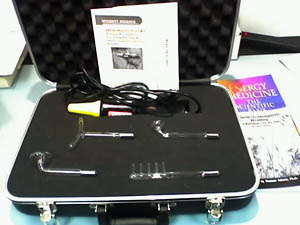
PREMIER
Jr.
|
|
|
1) The Rise of the Personal Power Plant
|
|
By Jean Kumagai IEEE Spectrum
October 2014
http://spectrum.ieee.org/energy/the-smarter-grid/the-rise-of-the-personal-power-plant
Smart and agile power systems
will let every home and business generate, store, and share
electricity

At first glance, downtown Fort
Collins, Colorado, looks like a sweet anachronism. Beautifully
preserved 19th-century buildings beckon from leafy streets. A restored trolley car ding-dings
its way along Mountain Avenue. It's safe and spotless, vibrant and
unrushed.
And yet this quaint district is
ground zero for one of the most ambitious energy agendas of any
municipality in the United States. Fort Collins, population 150 000,
is trying to do something that no other community of its size has
ever done: transform its downtown into a net-zero-energy district, meaning it
will consume no more energy in a given year than it generates. And
the city as a whole is aiming to reduce its carbon emissions by 80
percent by 2030, on the way to being carbon neutral by midcentury. To
make all that happen, engineers there are preparing to aggressively
deploy an array of advanced energy technologies, including
combined-cycle gas turbines to replace aging coal-fired plants, as
well as rooftop solar photovoltaics, community-supported solar
gardens, wind turbines, thermal and electricity storage, microgrids,
and energy-efficiency schemes.
It's an audacious plan. But for
Fort Collins Utilities, the local electric company, the less daring
options were unacceptable. Like utilities all over the world, it is
grappling with the dissolution of the traditional regulated-monopoly
model of electricity production, with its single, centralized
decision maker. The costs of solar and wind electricity generation
have fallen to the point that countless consumers in many countries
now produce their own electricity, often (but not always) with the
blessing of regulators and policymakers.
The question now is, how far do we
want to go? In the coming decades, technology will let us radically
decentralize the grid, enabling businesses, factories, campuses, and
households to provide their own electricity for much of the day and
most of the year. Solar energy, fuel cells, and wind turbines will
all be cheaper than they are now. Power requirements will also be
reduced, because heating, cooling, appliances, and lighting will all
be more efficient. Advances in batteries and other forms of energy
storage will make it easier to ride out the inevitable variations in
solar and wind power and the reactive-power challenges that will
arise. And smart grids, microgrids, and other technologies will knit
these many microgenerators together in nimble networks that will let
people sell excess energy and capacity while drawing from the main
grid as needed.
Taken together, these advances
will underpin a more sustainable energy future, in which nuclear and
fossil fuels play a gradually declining role and the effects of
pollution, greenhouse gases, and nuclear waste are reduced. But
large-scale changes to the power system can take decades to put into
place. So now is the time to envision what the grid should look like
in 2030 and beyond.
Such a future won't happen-in Fort
Collins or anywhere else-without overcoming significant challenges.
These include not just technological but also political and
regulatory issues. Today, every time a homeowner installs
photovoltaic panels on the roof and begins spinning the household
electricity meter backward, every time a plug-in hybrid owner decides
to charge up the car batteries, and every time a new wind turbine
starts to turn, it perturbs the grid. Though those individual
perturbations may be slight, as they begin numbering in the hundreds
of thousands or even millions, the strain on a grid not designed to
handle them will become potentially disastrous.
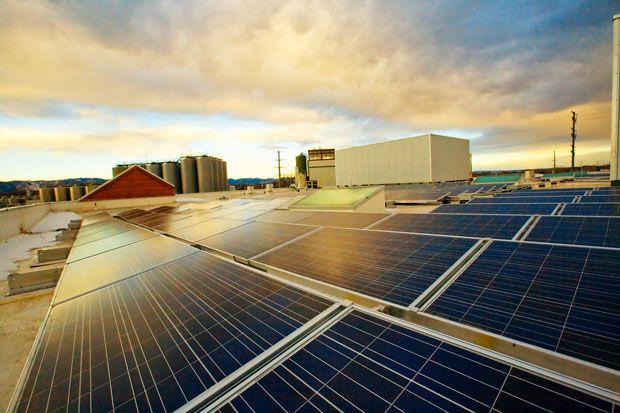
More Beer, Fewer Watts: Solar
panels at the New Belgium Brewing Co. in Fort
Collins, Colo., supply 3 percent of the plant's electricity. The
brewery is participating in the city's long-term plans to create a
net-zero-energy downtown district and to become carbon neutral by
midcentury.
The electricity industry is
undergoing the same sort of fundamental change that has already
transformed telecommunications and computing, says Clark Gellings, a fellow at the Electric Power Research Institute (EPRI),
in Palo Alto, Calif. Recall the heyday of the telephone landline,
when a monopoly provided reliable service, with few bells and no
whistles. Today, a multitude of telecom providers offer more wired
and wireless options and services than most people, frankly, care to
contemplate. Computers, similarly, used to mean giant mainframes
accessed via remote terminals. But when CPUs and memory became cheap
enough and powerful enough, people could own their own computers,
access and exchange information via the Internet, and leverage the
power of distributed computation in the cloud.
Gellings envisions an analogue for
electricity that he calls the ElectriNet: a highly interconnected
and interactive network of power systems that also combines
telecommunications, the Internet, and e-commerce. (Gellings first
unveiled the then-heretical notion of electricity customers managing
their own usage-a concept he called "demand-side load management"-in
the December 1981 issue of IEEE Spectrum.) Such a network will
allow traditional utilities to intelligently connect with individual
households, service providers, and as yet unforeseen electricity
players, fostering the billions of daily electricity
"transactions" that will take place between generators and
consumers. Smart appliances in the home will be able to respond to
changes in electricity prices automatically by, for instance, turning
themselves off or on as prices rise or fall. The ElectriNet will also
allow for home security, data and communication services, and the
like. [Listen to a podcast interview withGellings on the future of the power grid.]
In addition, Gellings says,
advanced sensors deployed throughout the network will let grid
operators visualize the power system in real time, a key capability
for detecting faults, physical attacks, and cyberattacks and for
preventing or at least mitigating outages.
While distributed generation is
already taking hold in many places, Gellings notes, "we have to
move toward a truly integrated power system. That's a system that
makes the best use of distributed and central resources-because
central power generation is not going to go away, although it may
change in shape and form." [For more on the undesirability of
grid defection, see the sidebar, "The Slow Death of the Grid."]
A highly intelligent and agile
network that can handle the myriad transactions taking place among
hundreds of thousands or even millions of individual energy producers
and consumers isn't just desirable, say experts. It has to happen,
because the alternative would be grim.
Just ask the Germans. Generous
subsidies, called feed-in tariffs, for renewable energy resulted in
the country adding 30 gigawatts of solar and 30 gigawatts of wind
power in just a few years. On a bright breezy day at noon,renewables can account for more than half
of Germany's generated electricity.
"That sounds like a good
thing, but to the utility, it looked like a huge negative load,"
notes Benjamin Kroposki, director of energy
systems integration at theNational Renewable Energy Laboratory in
Golden, Colo. When a large amount of renewable power is being
generated, the output of conventional central power plants is
correspondingly reduced to keep the system balanced. But if a local
outage or a voltage spike or some other grid disturbance occurs,
protective circuitry quickly shuts down the photovoltaics' inverters.
(Inverters are semiconductor-based systems that convert the direct
current from the solar cells to alternating current.) And that in
turn can lead to cascading systemwide instabilities.
"If you lose 30 gigawatts in
just 10 cycles"-two-tenths of a second, that is-"you can't
ramp up conventional generators quickly enough to compensate,"
Kroposki notes. So the Germans had to spend the equivalent of
hundreds of millions of dollars on smarter inverters and
communication links that would allow the PV arrays to automatically
ride through any disturbances rather than simply shut down.
Customers are paying dearly for
those upgrades: Electricity rates in Germany have doubled since 2002,
to about 40 U.S. cents per kilowatt-hour. That's more than four times
the price of electricity in Illinois. Many
other countries are now learning from these experiences, Kroposki
adds, "to make sure that solar and wind systems integrate with
the grid in ways that help overall system stability."
A sizable Japanese
experiment is taking such an integrated approach. At a site 30
minutes by train from central Tokyo, a real estate developer is
turning an old golf course into a planned smart city called Kashiwanoha. Energy,
water, and other public services for an eventual population of 26 000
are being intelligently managed at every scale, from individual
households to businesses and factories to citywide networks.
The smart-city concept has been
kicking around for a while. But it didn't really take hold in Japan
until the Fukushima disaster in March 2011,
says Akihiko Tobe, general manager of Hitachi's smart-city project
division, which is furnishing the energy management systems for
Kashiwanoha. "The earthquake changed everything," Tobe says.
"Many cities suffered great damage, with power breakdowns and
water shutdowns. In tall buildings, elderly people were trapped on
high floors because the elevators stopped working."
And so Kashiwanoha's electricity
system is designed to provide uninterrupted service to critical
systems like elevators, water pumps, and hospitals in the event of an
emergency. To do that, it relies on several battery storage sites as
well as a microgrid, which facilitates the sharing of electricity and
can operate in isolation of the main grid. A command center on the
second floor of a hotel and apartment building oversees the microgrid
and tracks exactly where electricity is being consumed and generated.
During normal operation, customers are also encouraged to track their
own energy usage through touch-screen monitors in their homes and
businesses. Those who do an especially good job of reducing their
consumption are awarded "eco points,"which
they can exchange for goods and services at the local LaLaPort shopping center.
Eventually, says Tobe, more home
automation will be added, like sensors that automatically turn off
lights when the curtains are opened. Health-care monitoring will also
be offered, to track things like how much exercise you get and how
many calories you eat. People who move to Kashiwanoha realize that
the city represents a break with the past, says Tobe. "Their
mind-set is that they're establishing a new culture, and they're
highly motivated to participate in making life better."
Assuming that
forward-looking cities like Fort Collins and Kashiwanoha reach
their energy goals, can that success be replicated? "A good
electricity future will depend on every new technology you can think
of," says EPRI's Gellings. "Energy storage, device
efficiency, better ways to mine coal and extract natural gas, grid
sensors, more advanced generation." Should any one of these
technologies not progress in the way that experts now assume they
will, it could throw a wrench in the works, he says. Regulators and
policymakers will also need to be convinced to make the hefty
investments in infrastructure that a smarter integrated grid will
require.
Even if all these changes come to
pass, the grid in 2064 will still look a lot like today's grid in
some key ways. Big coal plants, for instance, will remain a large
part of the energy mix. According to the U.S. Energy Information
Administration's International Energy Outlook 2013, the United States,Australia, and many other countries
will retire their aging coal plants, butother countries will continue to build
new ones. China, already the world's leading coal user, will
add about 530 gigawatts of coal-fired power capacity by 2040, the
report projects. And so coal's share of electricity generation
worldwide in 2040 will likely be just a few percentage points below
what it was in 2010.
And once those new plants come on
line, they'll be hard to budge. "This is a very inertial
field," says Vaclav Smil, who's studied the slow pace of change in the power industry.
"A single power plant costs like a billion dollars to build.
Once you put it in place, you don't want to tear it out and start
again. So innovation will happen mainly at the margins."
Innovation at the margins could
still lead to profound changes in the future grid, if cities like
Fort Collins and Kashiwanoha get it right. Fifty years from now, says
Steve Catanach, manager of light and power at Fort Collins Utilities,
the two coal-fired plants from which the city draws 80 percent of its
electricity will no longer be active. Taking their place will be new
combined-cycle gas turbines but also a larger share of distributed
generation. These days, the utility is actively encouraging
investments in wind and solar through a new feed-in tariff, which
will let customers sell their electricity back to the grid at a
guaranteed rate. Greater use of demand-response mechanisms will allow
customers to curtail their usage during times of peak demand. And
when energy storage becomes affordable, Catanach adds, "we'll
use that to balance the variability of the renewables."
While some industry experts are
wringing their hands over the looming "death spiral" for
today's utilities, Catanach manages to sound optimistic about what's
to come. "Fort Collins is a great place to live, and the lights
are always on," he says. He's pretty sure that 50 years from
now, people will still be able to say the same thing.
RELATED STORIES
Zero Energy Homes
https://medium.com/solutions-journal-summer-2014/houston-we-have-a-solution-b4aef81d9f80
Micropower's quiet Takeover
http://blog.rmi.org/blog_2014_10_20_micropowers_quiet_takeover
Is Wearable Tech the Next Frontier
for Energy Saving
http://blog.rmi.org/blog_2014_10_02_is_wearable_tech_the_next_frontier_of_energy_savings
back to table of contents
|
2) Nuclear
Fusion Energy in a Decade?
|
By Amrita Jayakumar, Washington
Post. October
15,2014
http://www.washingtonpost.com/news/capital-business/wp/2014/10/15/nuclear-fusion-energy-in-a-decade-lockheed-martin-is-betting-on-it/?hpid=z2
What
if the nuclear reaction that heats the sun could be
replicated to power cities on earth?
Lockheed
Martin is betting that it can be done - and within a decade. The
defense giant said Wednesday it is building a compact
nuclear fusion reactor.

The
key term here is "compact." Although nuclear fusion has
been studied for decades, Lockheed is hoping to build a reactor small enough to fit on the back of a truck and
ship around the globe.
"Many
of the approaches [to nuclear fusion] right now have significant
drawbacks," Tom McGuire, compact fusion lead for Lockheed's
California-based "Skunk Works" team, said in a phone
interview. Some of those drawbacks include instability
associated with the reaction, he said, or scaling problems,
which means the reactor needs to be very large in order for fusion to
work.
"What's
different about our physics is it's inherently small and
stable," McGuire said. The Skunk Works Group's first step
is proving that its model works, he said. Eventually, the
company hopes that "instead of a construction project, we
can make them in a factory," he said.
With
the announcement, Lockheed joins a host of ongoing global
efforts to study the potential of nuclear fusion. For example, the
European Commission last week announced a $1 billion (850 million
euro) initiative to develop nuclear fusion as
an energy source by 2020.
Here's
how nuclear fusion works: When two extremely hot atoms collide,
their nuclei combine to form one, releasing massive amounts of
energy. Unlike nuclear fission, which powers the
world's reactors today, nuclear fusion does not release harmful
radioactive material, making it a clean form of energy.
This
Lockheed video explains how scientists want to harness the
energy released in the fusion reaction, to potentially fuel airplanes
or power cities:
|
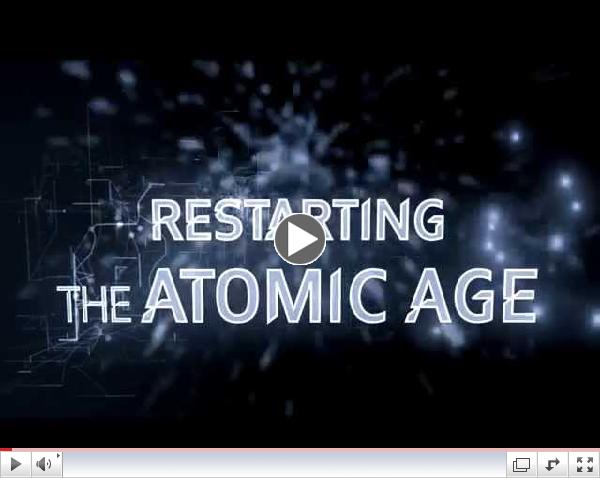
|
|
Lockheed Martin:
Compact Fusion Research & Development
|
Why
talk about the effort now?
"We've
strategically chosen this time because of our technical progress and
exposure to our patents pending," a Lockheed spokeswoman said in
an e-mailed statement. "We are also looking for partners to work
with us on the project, plus we think it is important for the public
and decision makers to understand the real promise that compact
fusion has for our nation and the world as a near-term solution to
our energy needs."
Lockheed
said it would look for partners in industry as well as the academic
community, McGuire said. The team at Lockheed is made up of about
10 people, he said.
Lockheed
Martin didn't say how much money it will invest in the project.
But as with many defense contractors, the company has ramped up its investment in energy
projects such as wind, solar and tidal energy over the last
few years.
For
the nuclear fusion project, the company hopes to take a cue from the
venture capitalist world, McGuire said. That means the team will seek
additional funding after successful technology demonstrations at
every stage, he said.
Most
recently, the company acquired a Massachusetts energy start-up
that developed a low-cost rechargeable battery.
This
post has been updated with additional comments from Skunk Works.
http://www.infinite-energy.com/iemagazine/issue118/analysis.html
|
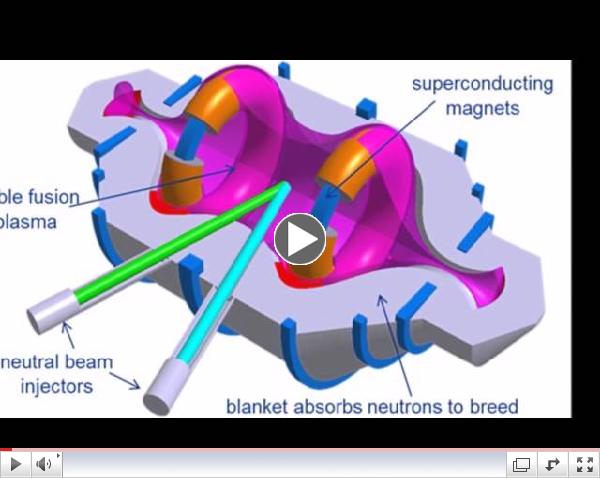
|
|
Lockheed Martin announces it's working on a
compact fusion reactor
|
|
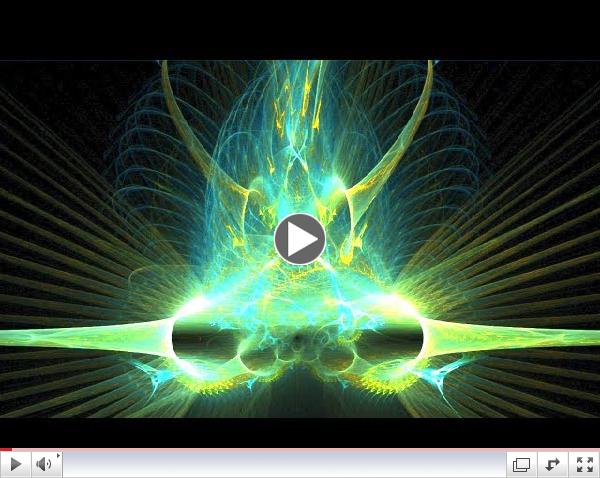
|
|
Nuclear Fusion By 2017!?!
|
|
3) Industrial
Size Generator that Runs on Waste Heat, Using No Fuel
|
Kevin Bullis,
MIT Technology Review, October 2014
Startup Alphabet Energy has its first product: what it
says is the world's largest thermoelectric generator.
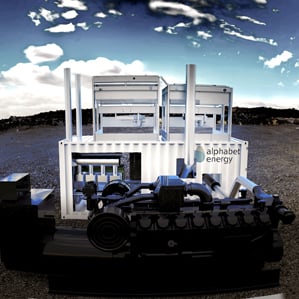
Power plants waste huge amounts of
energy as heat-about 40 to 80 percent of the total in the fuel they
burn. A new device could reduce that waste, cutting fuel consumption
and carbon emissions by as much as 3 percent and saving companies
millions of dollars. (Three percent might not seem like much, but for
context, air travel accounts for 2 percent of worldwide carbon
dioxide emissions.)
The generator makes use of a novel,
highly efficient thermoelectric material discovered recently at the
University of Michigan (see "Thermoelectric Material to Hit Market
Later this Year"). Thermoelectric materials, which convert
heat into electricity, have been around for decades, but they have
always been too expensive to use outside extreme situations-in
spacecraft, for example.
Matt Scullin, the CEO of Alphabet Energy, the startup that
developed the new device, says connecting it to the exhaust pipe of a
1,000-kilowatt generator will yield enough electricity to save 52,500
liters of diesel fuel a year, for a reduction of about 2.5 percent.
For smaller engines, the savings would be slightly higher, Scullin
says.
The first customers will probably
be oil, gas, and mining companies that use large generators to
produce power in remote areas. The generator could save those
companies millions in fuel, Scullin says. "There aren't many
levers these companies can pull to reduce costs that much," he
adds.
Ali Shakouri, a professor of
electrical and computer engineering at Purdue University, says the
cost savings sound plausible given the material being used, although
he hasn't had a chance to evaluate the technology.
Alphabet Energy's system is
modular, meaning it could be scaled up to make use of larger amounts
of waste heat. The company is also developing another thermoelectric
material, based on silicon nanowires, that could convert a higher
percentage of the energy in waste heat to electricity.
Even improved thermoelectric
materials, however, are unlikely to reduce fuel consumption by more
than 5 or 10 percent. Other options for making use of waste heat
include heating (and even cooling) nearby buildings in cities.
|
4) New
Microscope Sees Bioenergetics
|
By Meghan
Rosen, Science News October 24 2014
https://www.sciencenews.org/article/new-microscope-gives-clear-view-inside-cells?utm_source=Society+for+Science+Newsletters&utm_campaign=8c247b46f5-Editors_picks_week_of_Oct_20_2014_10_25_2014&utm_medium=email&utm_term=0_a4c415a67f-8c247b46f5-93294525
A new microscope sweeps lattices
of light over samples to give scientists sneak peeks inside living
cells without hurting them.

Scientists have previously devised
ways to glimpse the hidden machinery of cells, but spying the tiny
nuts and bolts in action is tricky. Shining light on cells for too
long can bleach their color and even kill them.
So 2014 chemistry Nobel
Prize-winner Eric Betzig of the Howard Hughes Medical Institute's
Janelia Research Campus in Ashburn, Va., and colleagues tweaked a
technique to see cells' innards (SN Online: 10/8/14). Instead of
shooting a focused beam of light at a developing embryo or a virus
infecting a cell, the scientists spread the beam out into a grid.
Breaking up the beam dials down the
light's intensity and protects cells,the researchers report in the
Oct. 24 Science. Using the scope, the scientists watched as a
cancer cell navigated through a sticky thicket of protein and as an
immune cell (shown in orange) stretched out and glommed on to another
cell (blue-green).
|

|
|
Cancer-cell squeeze | Science News
|
TIGHT FIT A human leukemia cell (marked with a
fluorescent green tag) squeezes through a spiny tangle of gel-like
protein (orange) in a movie scientists made using a new microscopy
technique. Credit: Betzig Lab/HHMI
|
5) Spacex Will
Try Rocket Landing on Floating Ocean Platform
|
Miriam Kramer,
Space.com October 24, 2014
www.space.com/27538-spacex-reusable-rocket-test.html?cmpid=558401
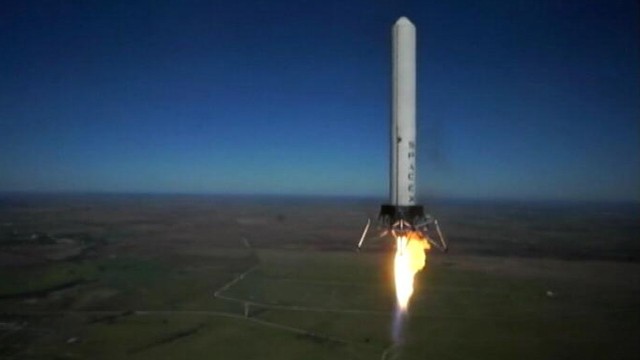
The private spaceflight company
SpaceX is hoping to bring a rocket back from space and land it on a
giant, floating in the middle of the ocean, SpaceX founder Elon
Musk said Friday (Oct. 24).
The company is expecting to try to
land the booster on the platform as part of their next launch to
space. Musk explained that landing a reusable rocketon
the floating platform - which measures about 300 feet long by 170
feet wide (91 by 52 meters) - is a big step toward bringing the
company's Falcon 9 rocket back to dry land. Musk and SpaceX hope to
develop reusable rocket systems and capsules in order to decrease the
cost ofaccess to
space, which could even make a colony on Mars a viable option at some
point. to
space, which could even make a colony on Mars a viable option at some
point.
SpaceX has already successfully
flown boost stages of the Falcon 9 back to Earth, landing in the
ocean after delivering various payloads to space, but the company has
not attempted to land the rocket back on a floating platform before.
According to publicly released schedules, SpaceX's next Falcon 9
launch is currently scheduled for December, when the California-based
company is expected to launch its fifth official robotic cargo
mission for NASA to the Space Station using the Dragon
spacecraft. [SpaceX Reusable Rocket
Re-entry Caught by Chase Plane (Video)]
"We're going to try to land on
[the floating landing platform] on the next flight," Musk said
today during a discussion here at the Massachusetts Institute
of Technology's AeroAstro 100 conference. "If we land on that
flight, I think we'll be able to re-fly that booster."
Musk doesn't necessarily think that
this first attempt will be , however. The landing platform will
be floating in the Atlantic Ocean with engines that can be used to
keep it in position; however, it could still be "tricky" to
land on top of it, Musk said.
Musk expects that SpaceX has about a
50 percent or less chance of succeeding in landing on the next
flyback, but future launches and landing could have more chance of
success.
"There are a lot of launches
that will occur over the next year," Musk said. "I think
it's quite likely that one of those , we'll be able to land and
re-fly, so I think we're quite close."
In July, SpaceX successfully
brought its Falcon 9 booster in for a soft landing in the ocean after
launching to space, but they weren't able to recover the rocket
stage. After landing in the Atlantic, the Falcon 9 toppled over as
planned, but, according to a Twitter post from Musk at the time, the
boost stage broke apart shortly after the soft landing. Other than
that, the July test appeared to go as planned.
RELATED STORIES
Flying Like George Jetson
|
About Integrity Research Institute
Future Energy eNews is
provided as a public service from Integrity Research Institute,
a Non-Profit dedicated to educating the public on eco-friendly
emerging energy technologies.
FREE copy
of the 30 minute DVD "Progress in Future Energy" is
available by sending an email with
"Free DVD" in subject and mailing address in
body.
Your generous support is
welcome by making a tax deductible donation on
our secure website
|
|
|
|
|
|
![]()



















